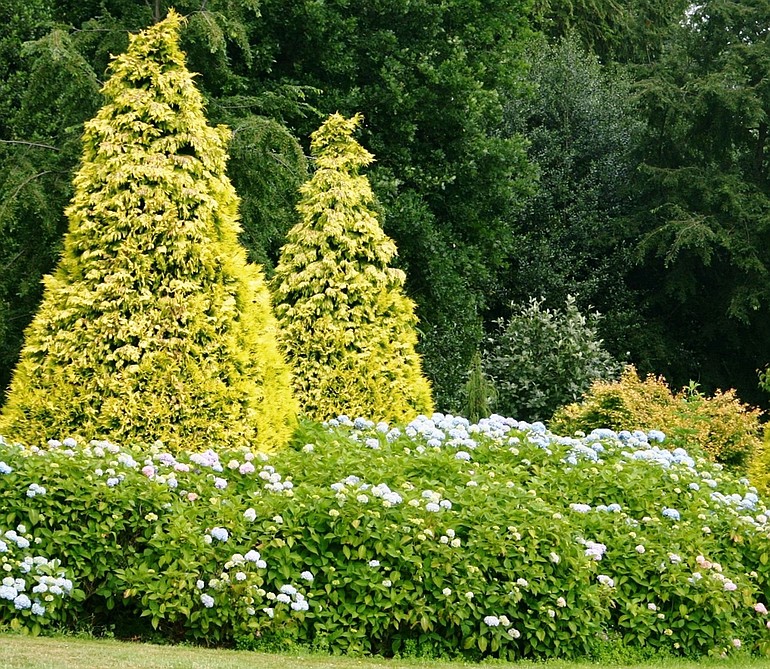Last weekend, my neighbor Murphy spent two days helping me assemble my new greenhouse kit. On Monday, my other neighbor, John, helped me pull together all the loose ends and finish the job. It’s always a pleasure to share a project with good friends. It’s especially rewarding when the job is done and my friends and I can finally enjoy this new addition to the garden.
At one point in the long Labor Day weekend, I was standing high on a step stool holding a polycarbonate panel in place when I felt a distinct change in the atmosphere. It was late afternoon and the temperature dropped quickly as the sun lowered in the sky.
“I think autumn just came in,” I said to my friend. We both reached for long-sleeved shirts to ward off the chill.
For me, the return of moderate weather is a signal to begin planting again. When you plant hardy perennials, trees and shrubs now, you are encouraging the new plant to expend its energy where it needs to at this time of year, under the soil. The cooling temperature of the air suspends flower and leaf growth. The roots expand into the still-warm earth.
Along with putting new plants into the ground, this is a good time to move plants from one area of the garden to another. We can expect the rains to come soon but even if there are lulls in the rain the sun begins to fall from a different angle, so it will no longer leach the moisture out of the soil. The earth below the surface will continue to retain a degree of warmth. This sets the plant up properly for a period of dormancy.
As long as you are prepared to protect young plants from unexpected freezes, you can also put out needle and broadleaf evergreens in the fall. Take special care by watering them well for several days both before and after the move. While you are out planting, this is the perfect time to create a new garden area. A satisfying bed, border or seating area with all-year interest will contain a mix of trees, shrubs, vines and perennials.
Most of us will find a distinct drop-off in the workload as fall comes upon us. Many plants require little attention at this time of year. The ornamental grasses are at their peak, displaying mature seed heads that sway in the slightest breeze. It is too early to clean up beds and borders for winter and we are still a way out from leaf fall.
I was saddened to hear the news that our dear friends Bob and Debbie Pollock have decided to close down Pollock and Son’s Nursery, their incredible specialty plant center. The entire garden community will miss their unequaled selection of choice garden plants, including 130 different varieties of Japanese maples and an amazing collection of hard to find dwarf, golden and weeping conifers.
On the other hand, I am excited to share the news that this plant inventory will go on sale to the public for 50 percent off beginning in mid-September. If there is a specialty plant that you have held off buying because of the high price, it will be worth your while to visit the nursery at 7901 N.E. 179th St., between the Clark County fairgrounds and Battle Ground. Give them a call at 360-573-6370. We wish them well.
Planting and transplanting are not difficult jobs but it is true that many plants die because they are not planted properly. Make sure you have all your tools on hand and enough help to lift the plants you are working with. Use a good, pointed shovel to dig. Have a set of pruners on hand in case you need to trim branches and use a tarp if the plant you are moving is extremely heavy and needs to be pulled across the yard.
Once planted or transplanted, mound up the soil in a ring around the plant, forming a berm that will catch water like a basin. This will help you achieve your main objective: keeping the new transplant’s roots well watered until it becomes established. Make a deal with a friend to help each other plant this fall. You’ll be happy to know that there is rain in the weather forecast. That is one more benefit of doing the right job at the right time.
Robb Rosser is a WSU-certified Master Gardener. Reach him at Write2Robb@aol.com.



